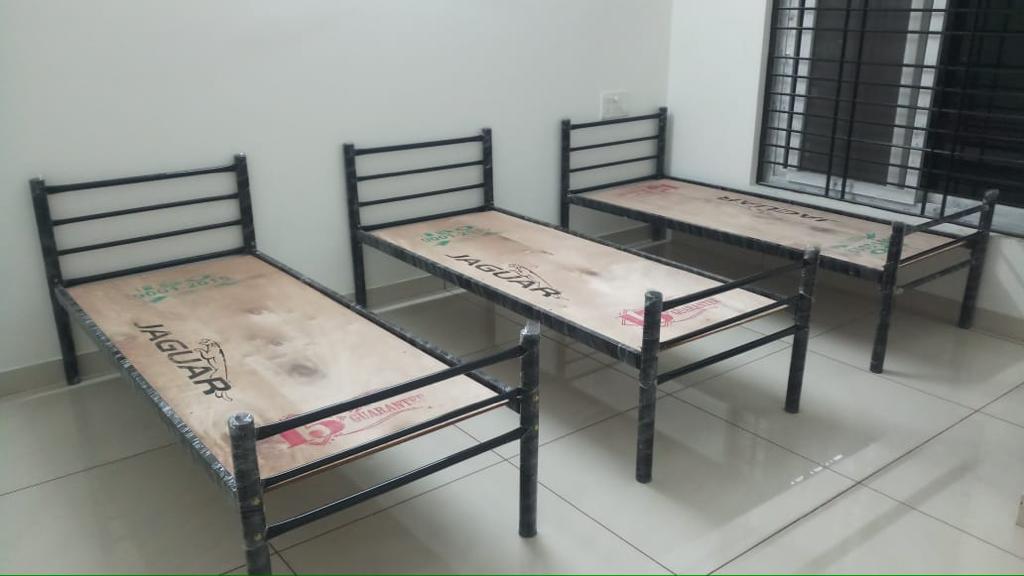MS Single Bed Manufacturing: A Guide to Quality and Durability
MS (Mild Steel) single beds are an essential part of the furniture industry, offering a combination of strength, durability, and aesthetic appeal. Manufacturing MS single beds is a highly specialized process that demands expertise in metal fabrication, precision engineering, and quality control. For businesses looking to invest in or purchase MS single beds, understanding the manufacturing process, material selection, and benefits is key to making informed decisions. This guide will walk you through the essentials of MS single bed manufacturing.
1. Material Selection
Mild Steel (MS) is the primary material used in the manufacturing of single beds. It is a low-carbon steel known for its strength, malleability, and ability to withstand stress without breaking. Mild steel is easier to weld, cut, and shape, making it an ideal material for creating robust bed frames that provide long-lasting support. Additionally, it is cost-effective, which allows manufacturers to create affordable yet sturdy furniture.
To ensure the highest quality, manufacturers use various grades of mild steel, selecting specific types based on the design and functional requirements of the bed. High-quality MS ensures durability, resistance to wear and tear, and reduced risk of corrosion, making it a top choice for manufacturing bed frames.
2. Design and Engineering
The design phase is a critical aspect of MS single bed manufacturing. Modern manufacturers use advanced computer-aided design (CAD) software to develop precise blueprints for the bed’s structure. The design process takes into consideration the bed's aesthetics, the load it can bear, and the overall structural integrity.
Once the design is finalized, it moves to the engineering phase. MS single beds typically consist of the following components:
- Frame: The outer structure that provides the foundation for the bed.
- Legs: Support the frame and elevate the bed off the floor.
- Slats or Mesh: Support the mattress and distribute weight evenly across the bed.
The frame is constructed by cutting the mild steel into specific dimensions using high-precision tools. Each piece is then welded together, ensuring the joints are solid and can bear weight without collapsing. The bed’s components are assembled with accuracy to ensure that every piece fits perfectly.
3. Surface Treatment and Finishing
After assembly, the MS bed frame undergoes surface treatment to improve its durability and appearance. This typically includes sandblasting to remove any impurities, followed by coating or painting to protect the steel from corrosion. Popular finishes for MS single beds include powder coating, which provides a smooth, long-lasting finish and is resistant to chipping, scratching, and fading.
Manufacturers may also opt for custom finishes, such as polished steel or textured coatings, depending on the client's requirements. The finishing stage is crucial for ensuring the bed's longevity, as untreated or poorly treated steel is more susceptible to rust and wear.
4. Quality Control
In any manufacturing process, quality control is paramount. MS single bed manufacturers conduct rigorous inspections at every stage of production, from raw material selection to the final assembly. Testing is done to verify the bed’s strength, stability, and durability. The welds are checked to ensure they are secure, and the finishing is inspected for any imperfections.
Beds are also tested for load-bearing capacity, ensuring that they can support different weight classes without compromising safety. Once all tests are passed, the bed is packaged and prepared for shipping.
5. Benefits of MS Single Beds
MS single beds are popular for several reasons:
- Durability: Mild steel offers unmatched strength, making it ideal for long-term use.
- Affordability: Compared to other materials like wood or stainless steel, MS is more cost-effective.
- Low Maintenance: With proper surface treatment, MS beds are resistant to rust and require minimal maintenance.
- Customizability: MS beds can be customized in terms of design, finish, and size, making them suitable for various spaces and customer preferences.
Conclusion
MS single bed manufacturing combines the durability of mild steel with innovative design and engineering to produce high-quality, long-lasting furniture. By focusing on material selection, precision fabrication, and stringent quality control, manufacturers can create beds that meet the highest standards of safety, comfort, and durability. Whether for residential or commercial use, MS single beds offer a reliable, cost-effective solution for those seeking functional and aesthetically pleasing furniture.

